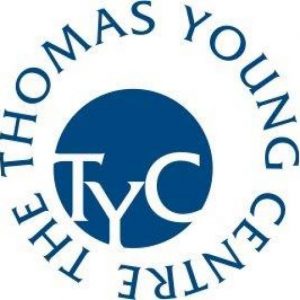
- This event has passed.
2nd TYC Early Career Award 2024
20 June 2024 @ 3:00 pm – 6:00 pm
Torrington Place (1-19), room G13
The TYC Early Career Prize, established in 2022 will be awarded to an early career researcher in recognition of their original published research in the theory and/or simulation of materials or (bio)molecules.
The awardee will be selected by a panel of academics in the broad field of theory and simulation of materials and molecules, and invited to UCL in London to give an presentation of their research work at a special in-person Symposium, to be held in London on 20 June 2024.
Shortlisted applicants are invited to give an oral presentation of their research work at this special in-person Symposium.
Attendance is free but we kindly ask you to register before 6th June
Please be aware that you will be asked to demonstrate the purpose of your visit on entry to the venue building. This could include showing evidence of the reason for attending campus, such as an email invitation or ticket to your event. We will make a list of attendees available to the security team in advance so that they know to expect you.
Schedule:
15:00-15:30 Photophysics and photochemistry in organic crystals – Federico Hernandez, QMUL/UCL
15:30-16:00 Coarse-grained modelling for molecular materials design – Emma Wolpert – Imperial College London
16:00-16:15 Coffee
16:15-16:45 Boosting the H2 adsorption energy using insights from quantum Monte Carlo and density functional theory – Yasmine Al-Hamdani, University College London
16:45-17:15 Atomistic modelling of moiré materials – Indrajit Maity – Imperial College London
17:15-18:00 Reception and Prize Giving
Photophysics and photochemistry in organic crystals – Federico J. Hernández
Light-activated phenomena underpin applications in optoelectronic devices, sensors and energy materials among others. These processes take place in the condensed phase and the environment has an active role by either restricting the motions of the excited molecules (“cage effect”) or directly participating in the main excited mechanisms.1 A full understanding of these phenomena at the atomic level is required to optimize quantum efficiencies and aid the design of new materials with tailored properties.
Computational studies of photophysics and photochemistry in the solid state are extremely challenging due to the substantial computational cost of high-fidelity calculations of chromophore excited-state dynamics in periodic systems. A pragmatic approach requires the implementation of reasonable approximations to mitigate the computational cost without sacrificing accuracy. In the last years, I have focused on the development and application of an efficient QM/QM’ multiscale approach to model the photochemistry and photophysics of molecular crystals in both the static and dynamic frames. In this presentation, I will showcase illustrative examples of modelling radiative, nonradiative, transport and photochemistry occurring in different molecular crystals.2-5 The selected systems have applications in optoelectronics and renewable energies, such as organic solar cells, organic light-emitting diodes and molecular organic solar thermal materials.
[1] F. J. Hernández and R. Crespo-Otero. “Modeling Excited States of Molecular Organic Aggregates for Optoelectronics” Ann. Rev. Phys. Chem. 2023, 74:547-57.
[2] F. J. Hernández, R. Crespo-Otero. J. Mater. Chem. C., 2021, 9, 11882.
[3] A. Sidat, F. J. Hernández, L. Stojanović, A. J. Misquitta and R. Crespo-Otero. Phys. Chem. Chem. Phys. 2022, 24, 29437-29450
[4] Li, F. J. Hernández, C. Salguero, S. A. Lopez, R. Crespo-Otero, J. Li. 10.26434/chemrxiv-2024-l21qz
[5] F. J. Hernández, J. M. Cox, J Li, S. A. Lopez and R. Crespo-Otero. “Tools for understanding photochemical processes in molecular crystals: fromage/PyRAI2MD ” (in preparation)
Coarse-grained modelling for molecular materials design – Emma Wolpert
Coarse-grained models are widely used to reduce the computational cost of simulating materials phase behaviour whilst retaining the main chemical and physical degrees of freedom. But beyond reducing computational cost, coarse-grained models can also be used to develop design rules by highlighting the degrees of freedom which are responsible for materials phase behaviour. Here we show how coarse-grained models can be used for molecular materials design, focusing on the supramolecular assembly of porous organic cages—molecules with permanent internal cavities. We predict the solid-state phase behaviour of the cages by relating their underlying geometry to a hard polyhedra with directional interactions between favoured packing motifs1. Our results show that by manipulating the parameters of our coarse-grained model, we can reproduce the phase space spanned by porous organic cages found within the literature. By mapping the coarse-grained phase space back onto calculated intermolecular interactions, we can directly relate each cage to its likely crystal packing structure, highlighting the potential for this model to predict the packing of new cages, inform design rules, and motivate targeted cage design. Moreover, we can use atomistic calculations between dimers of cages to inform our coarse-grained models for ab initio crystal structure prediction. The principle used is not unique to porous organic cages and we showcase examples of how coarse-grained modelling can be used for materials design in other molecular material such as organic semiconductors and covalent organic frameworks2.
[1] EH Wolpert and KE Jelfs, Chem. Sci. 13, 13588-13599 (2022).
[2] EH Wolpert, A Tarzia, and KE Jelfs, Chem. Commun. 59, 6909-6912 (2023).
Boosting the H2 adsorption energy using insights from quantum Monte Carlo and density functional theory – Yasmine Al-Hamdani
A more sustainable world requires a host of different strategies and hydrogen is set to play an increasingly important role in green energy. Specifically, hydrogen has the potential to significantly reduce the use of carbon dioxide emitting energy processes. However, hydrogen gas storage is a major bottleneck for its large-scale use as current storage methods are energy intensive. Among different storage methods, physisorbing molecular hydrogen at ambient pressure and temperatures is a promising alternative—particularly in light of the advancements in tunable lightweight nanomaterials and high throughput screening methods. Nonetheless, understanding hydrogen adsorption in well-defined nanomaterials remains experimentally challenging and reference information is scarce.
Among many potential materials, layered materials such as graphene present a practical advantage as they are lightweight. However, graphene and other 2D materials typically bind hydrogen too weakly to store it at the typical operating conditions of a hydrogen fuel cell. Modifying the material, for example by decorating graphene with adatoms, can strengthen the adsorption energy. In this talk, I will show that we can use density functional theory modelling to understand the binding mechanisms at play and that a reference wavefunction based method, namely quantum Monte Carlo, is needed to accurately predict the absolute adsorption energy for different materials. By carefully combining the insights from these modelling methods, we build our understanding for boosting the hydrogen adsorption energy.
Atomistic modelling of moiré materials – Indrajit Maity
If one places a regularly ruled transparent plastic sheet on top of another identical plastic sheet and then rotates the top sheet while holding the bottom one fixed, a beautiful moiré pattern emerges. Since 2018, experimentalists have been able to create similar moiré patterns with two-dimensional materials, such as graphene or transition-metal dichalcogenides. These novel moiré materials exhibit many fascinating electronic, vibrational, and optical properties, including superconductivity, and long-lived excitons, all of which are tunable through the twist angle. The major bottleneck in accurate atomistic modelling of moiré materials is that the unit cell contains hundreds to thousands of atoms. Therefore, well-established ab-initio approaches cannot be directly applied due to significant, sometimes prohibitive, computational costs.
In this talk, I will discuss how we exploit a combination of large-scale classical simulations and ab-initio density functional theory calculations to compute electronic and vibrational properties of moiré materials. I will also introduce a new framework to efficiently compute the optical properties of moiré materials, where we exploit the localized nature of Wannier functions based on large-scale DFT calculations for single-particle computations, in conjunction with an analytical Keldysh potential to represent the screened Coulomb interactions. My talk will revolve around three emergent properties in moiré systems: chiral phonons, surfing electrons, and Wannier excitons.

